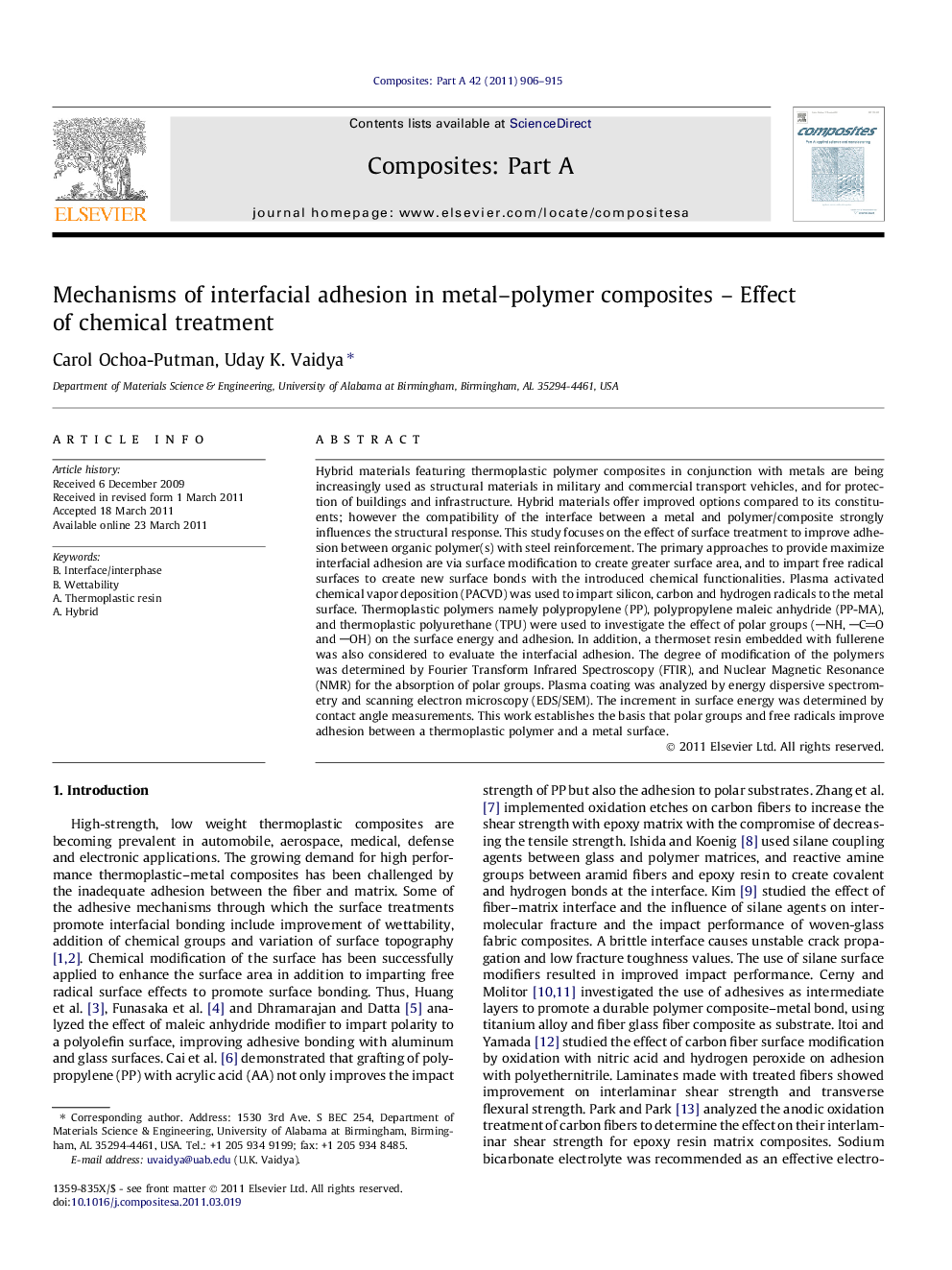| Article ID | Journal | Published Year | Pages | File Type |
|---|---|---|---|---|
| 1466859 | Composites Part A: Applied Science and Manufacturing | 2011 | 10 Pages |
Hybrid materials featuring thermoplastic polymer composites in conjunction with metals are being increasingly used as structural materials in military and commercial transport vehicles, and for protection of buildings and infrastructure. Hybrid materials offer improved options compared to its constituents; however the compatibility of the interface between a metal and polymer/composite strongly influences the structural response. This study focuses on the effect of surface treatment to improve adhesion between organic polymer(s) with steel reinforcement. The primary approaches to provide maximize interfacial adhesion are via surface modification to create greater surface area, and to impart free radical surfaces to create new surface bonds with the introduced chemical functionalities. Plasma activated chemical vapor deposition (PACVD) was used to impart silicon, carbon and hydrogen radicals to the metal surface. Thermoplastic polymers namely polypropylene (PP), polypropylene maleic anhydride (PP-MA), and thermoplastic polyurethane (TPU) were used to investigate the effect of polar groups (NH, CO and OH) on the surface energy and adhesion. In addition, a thermoset resin embedded with fullerene was also considered to evaluate the interfacial adhesion. The degree of modification of the polymers was determined by Fourier Transform Infrared Spectroscopy (FTIR), and Nuclear Magnetic Resonance (NMR) for the absorption of polar groups. Plasma coating was analyzed by energy dispersive spectrometry and scanning electron microscopy (EDS/SEM). The increment in surface energy was determined by contact angle measurements. This work establishes the basis that polar groups and free radicals improve adhesion between a thermoplastic polymer and a metal surface.
